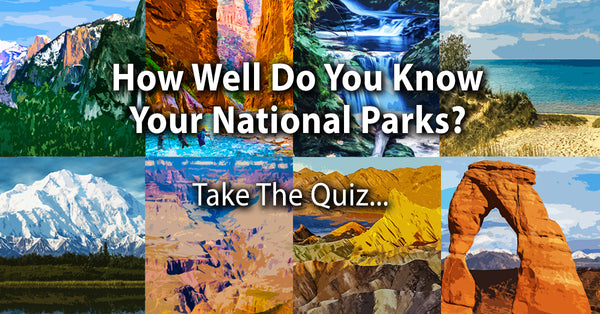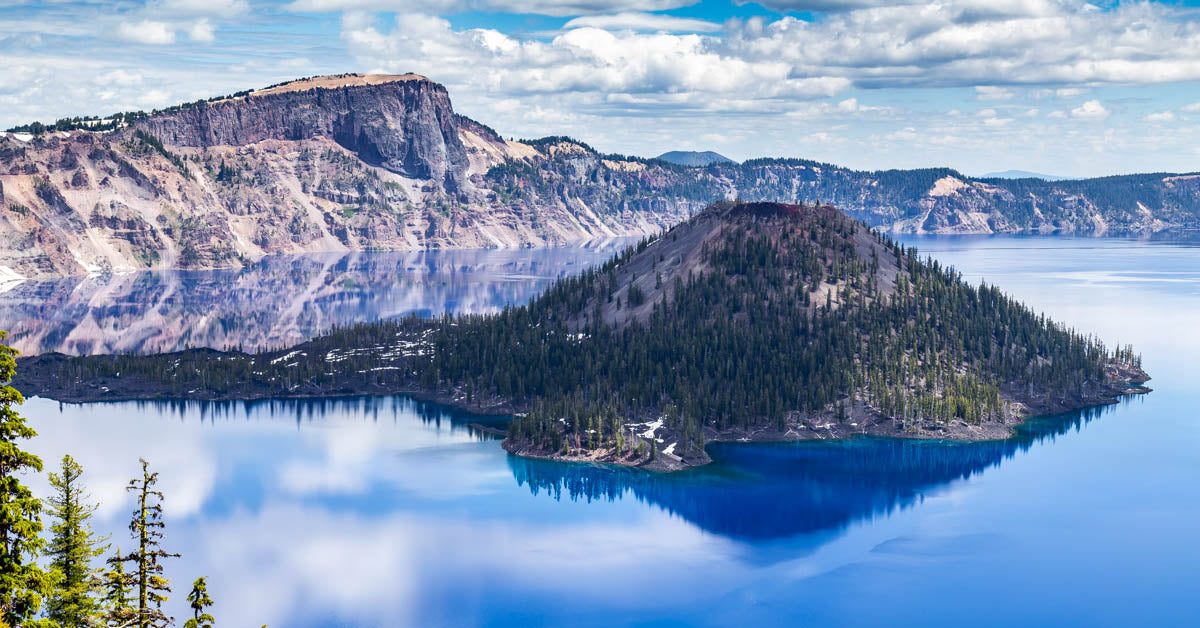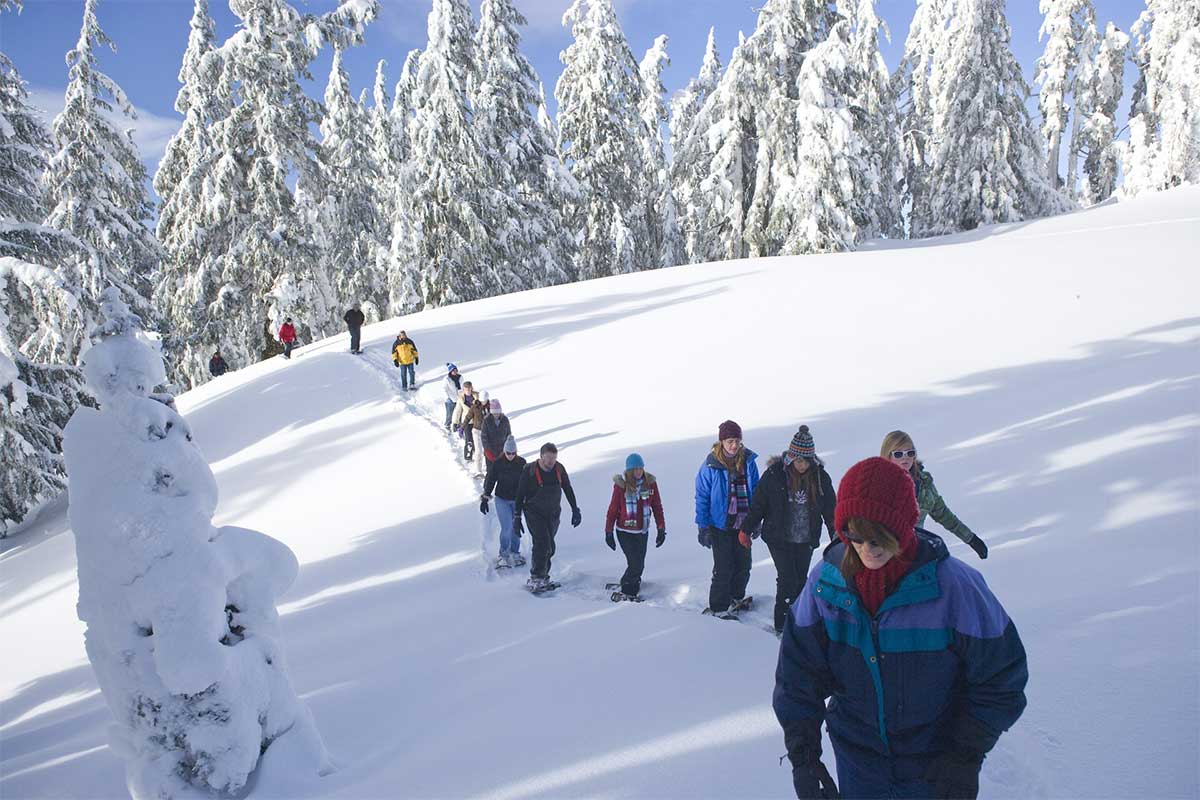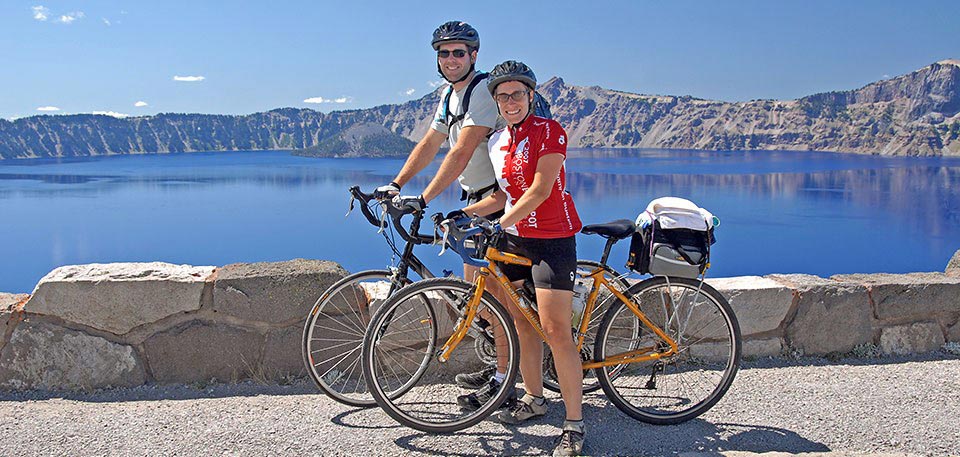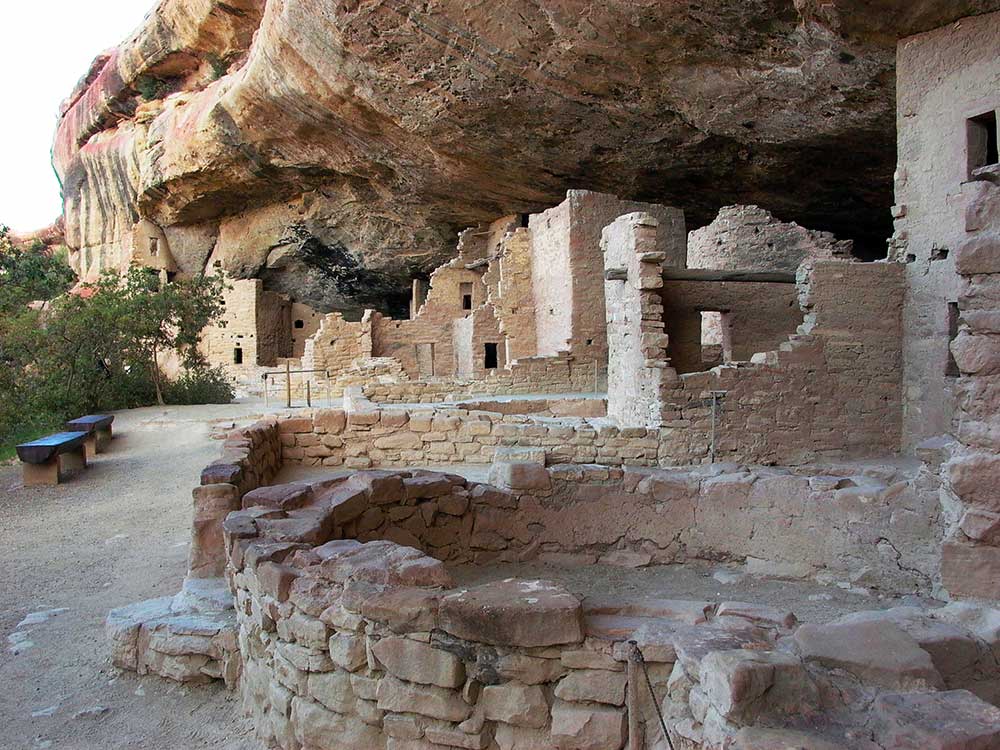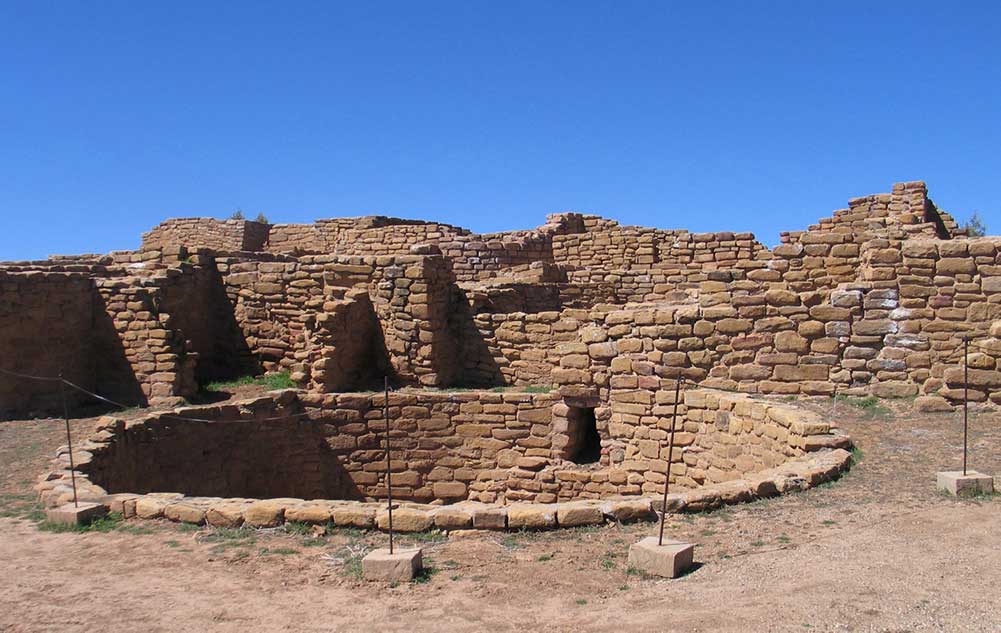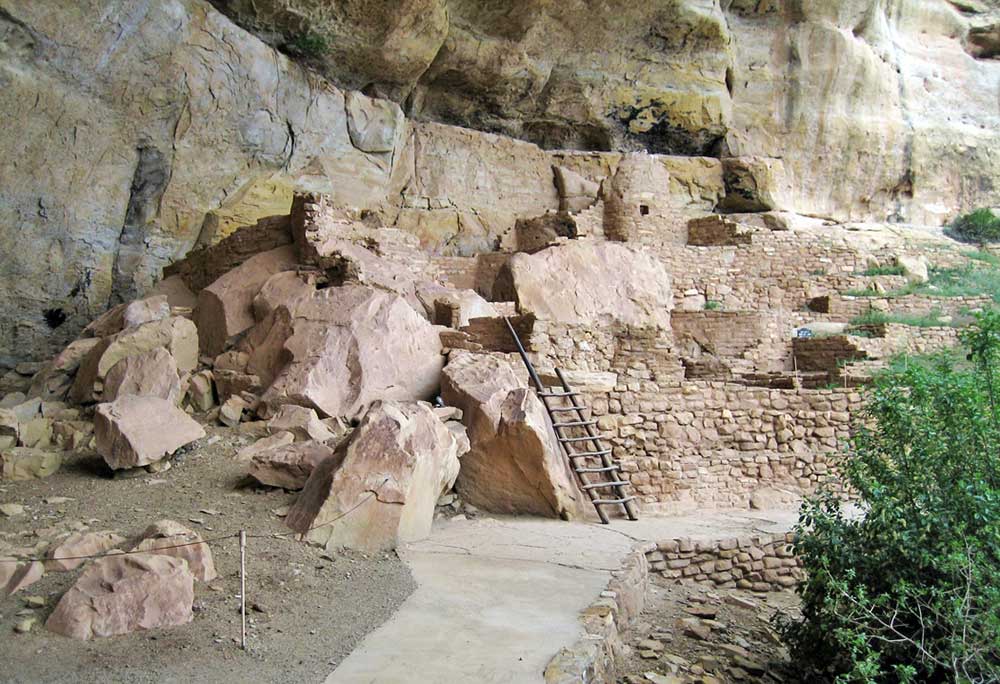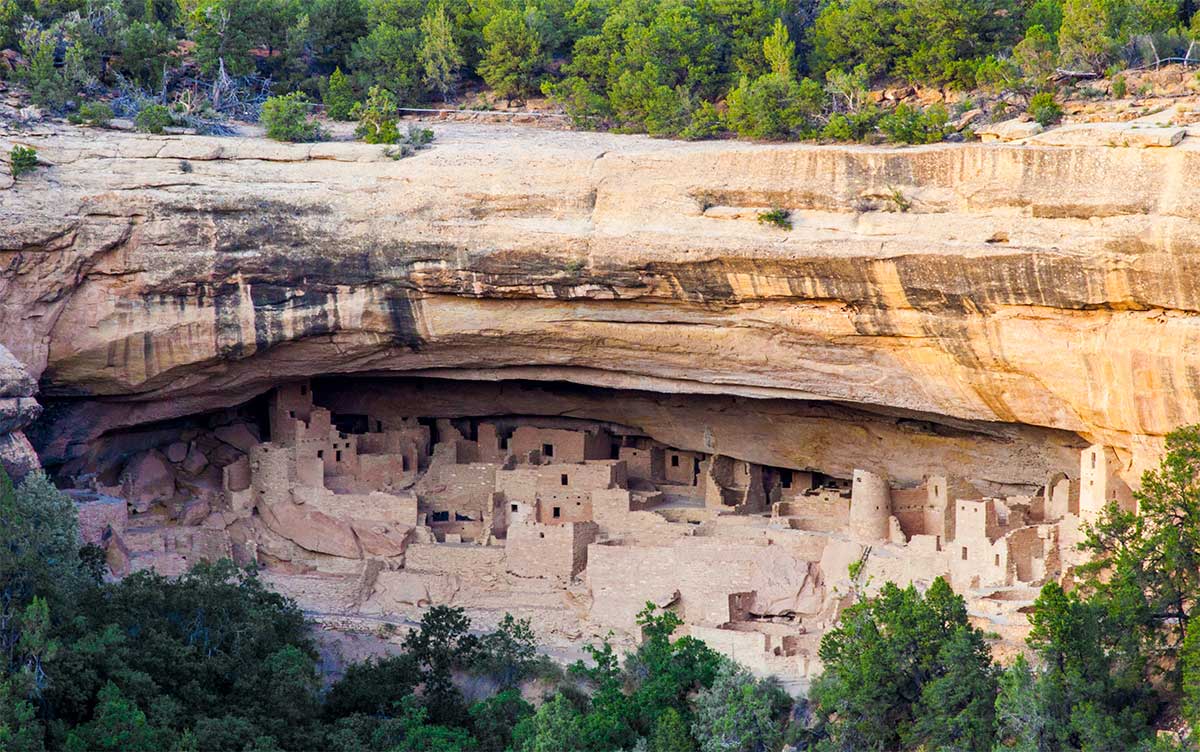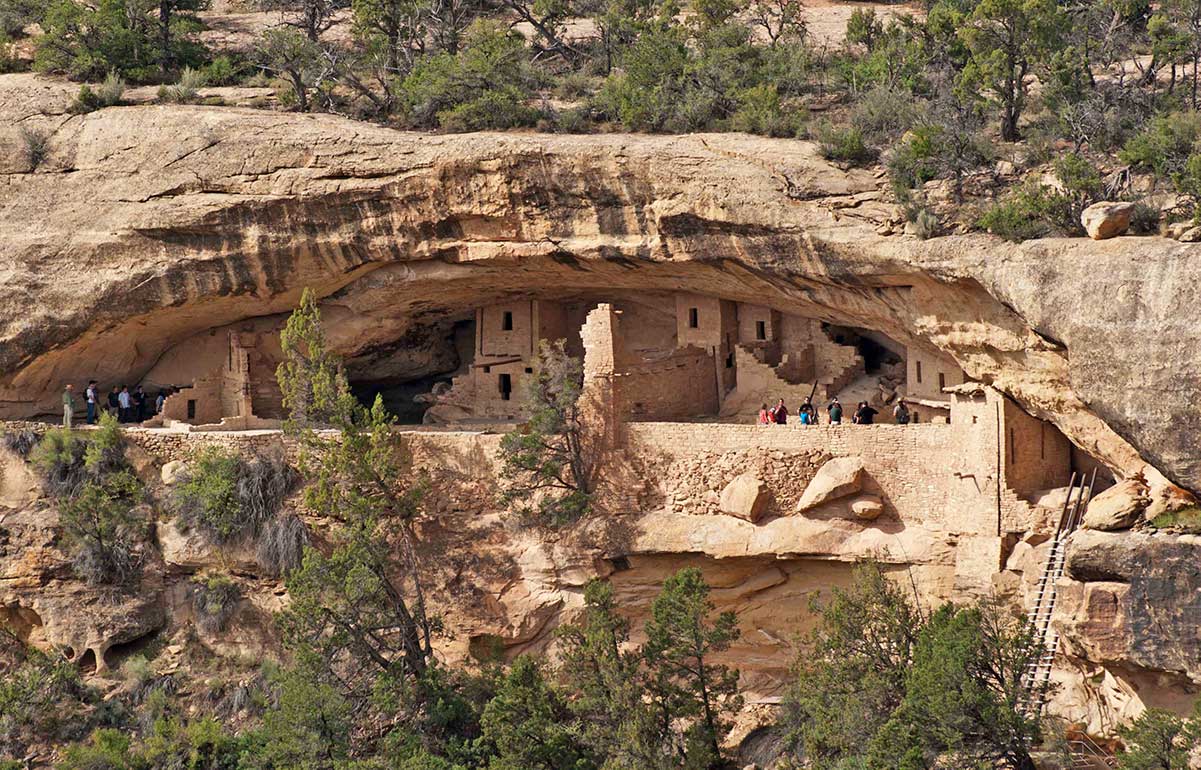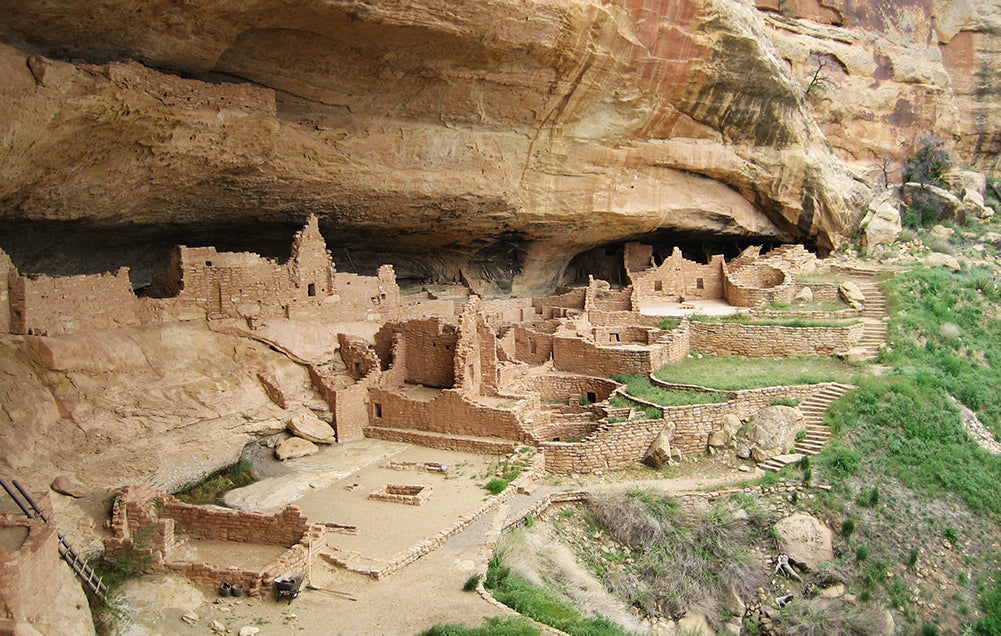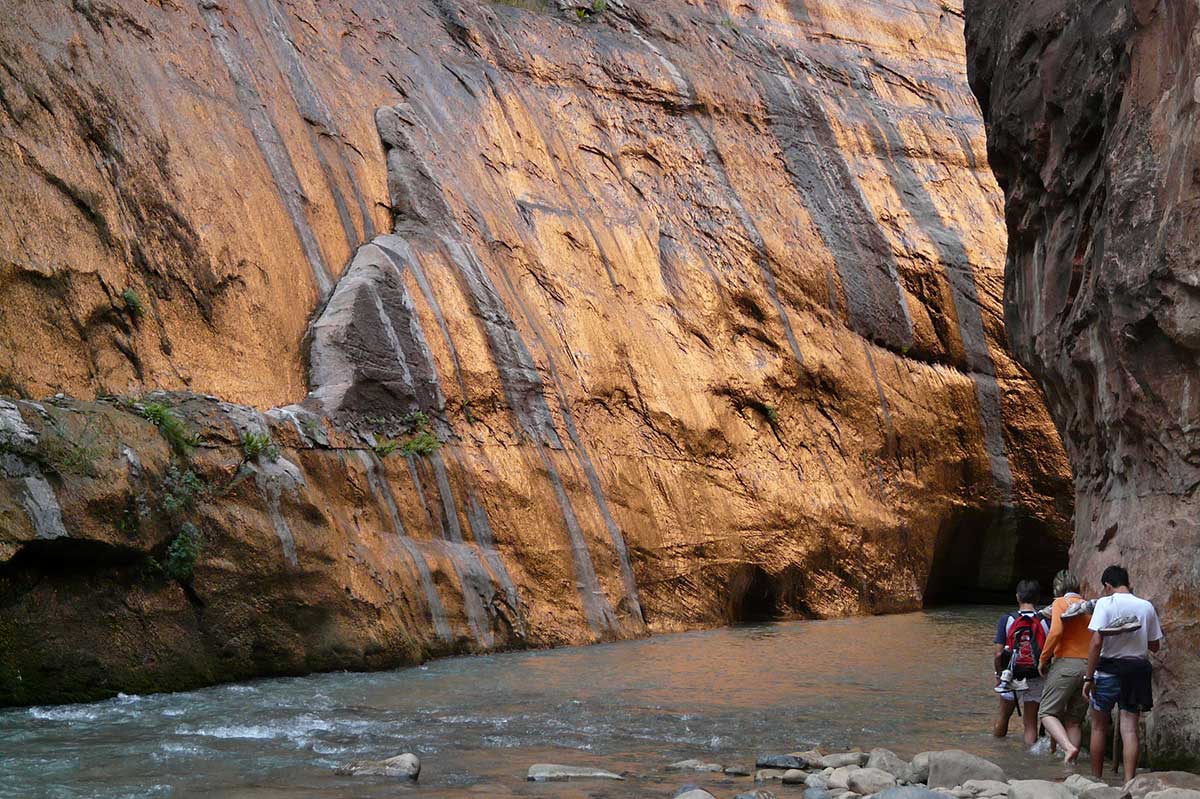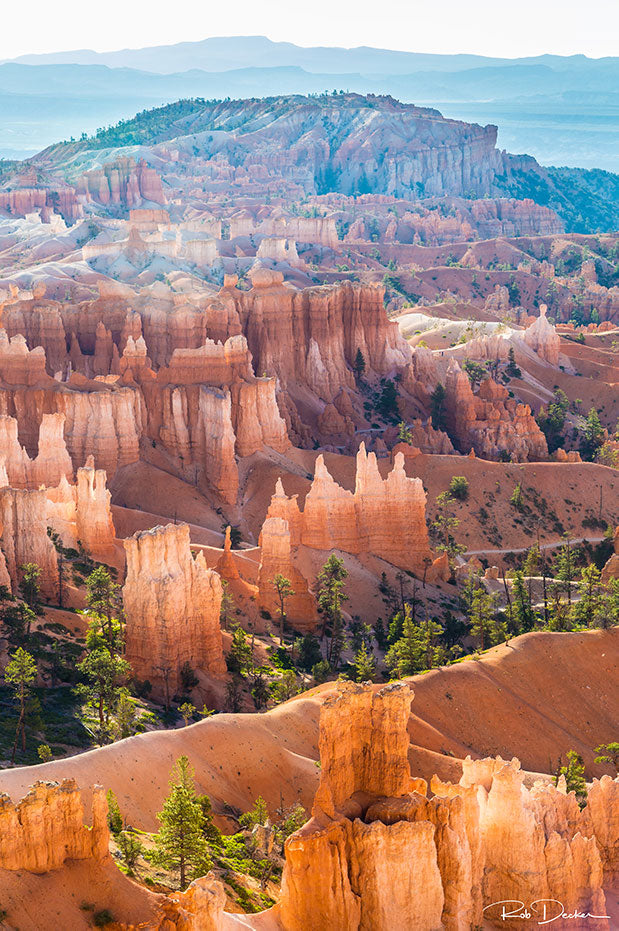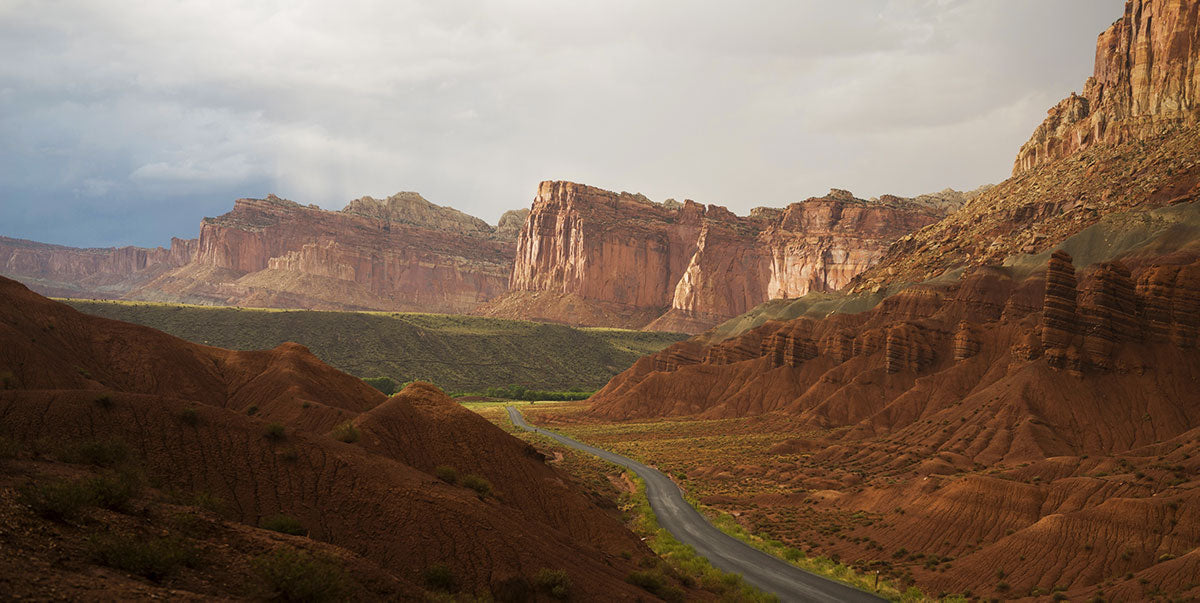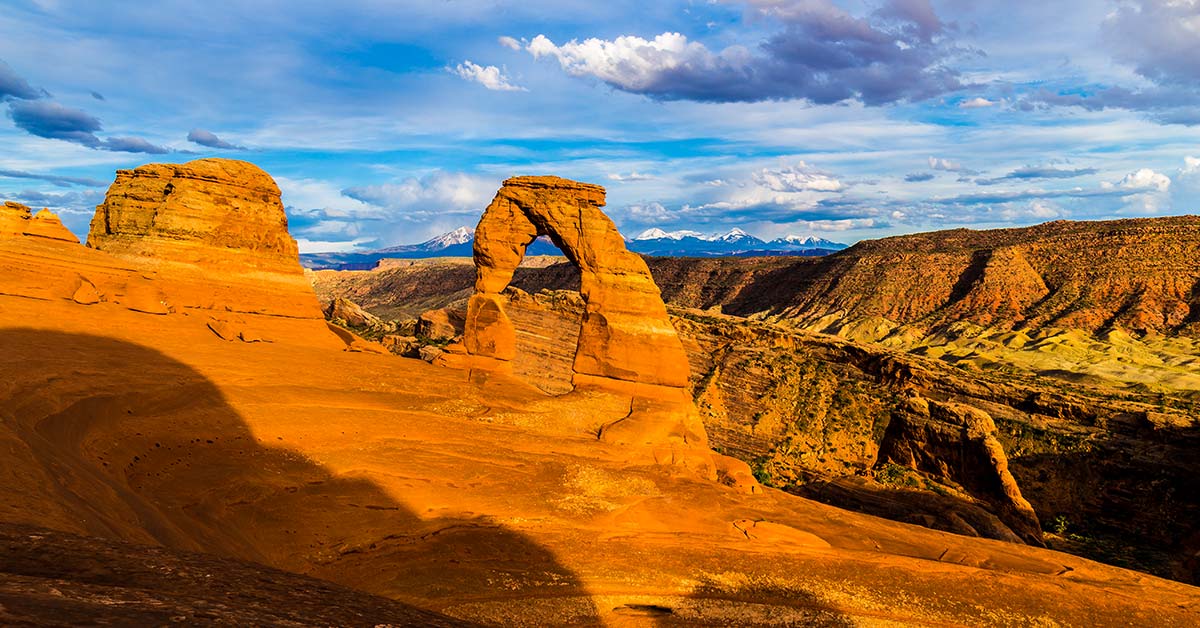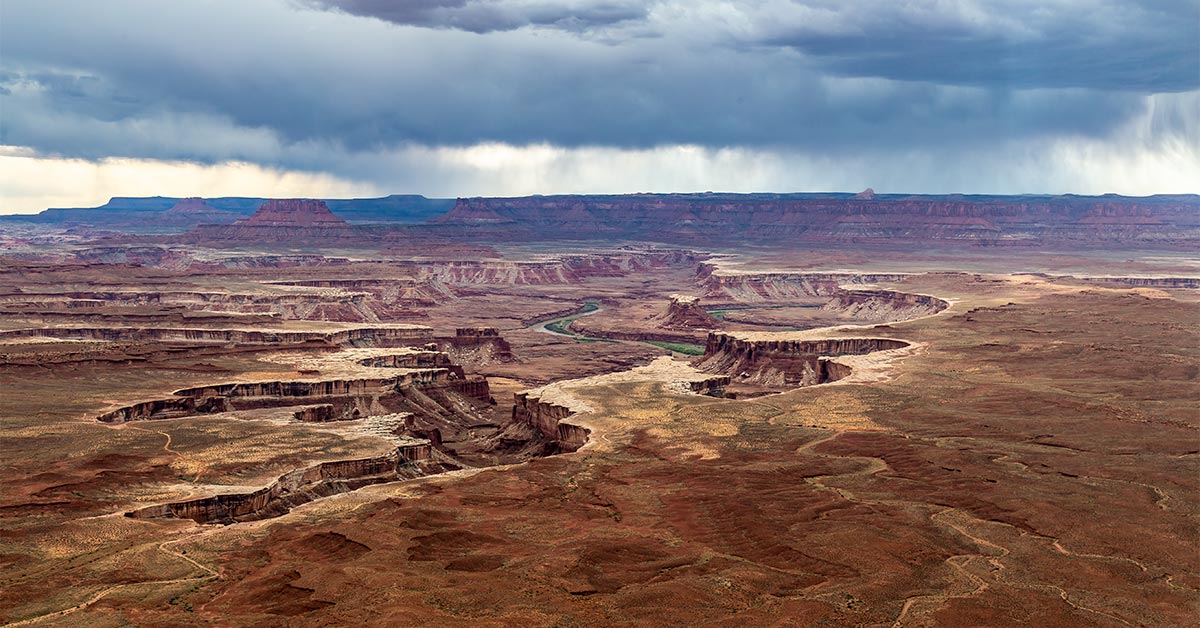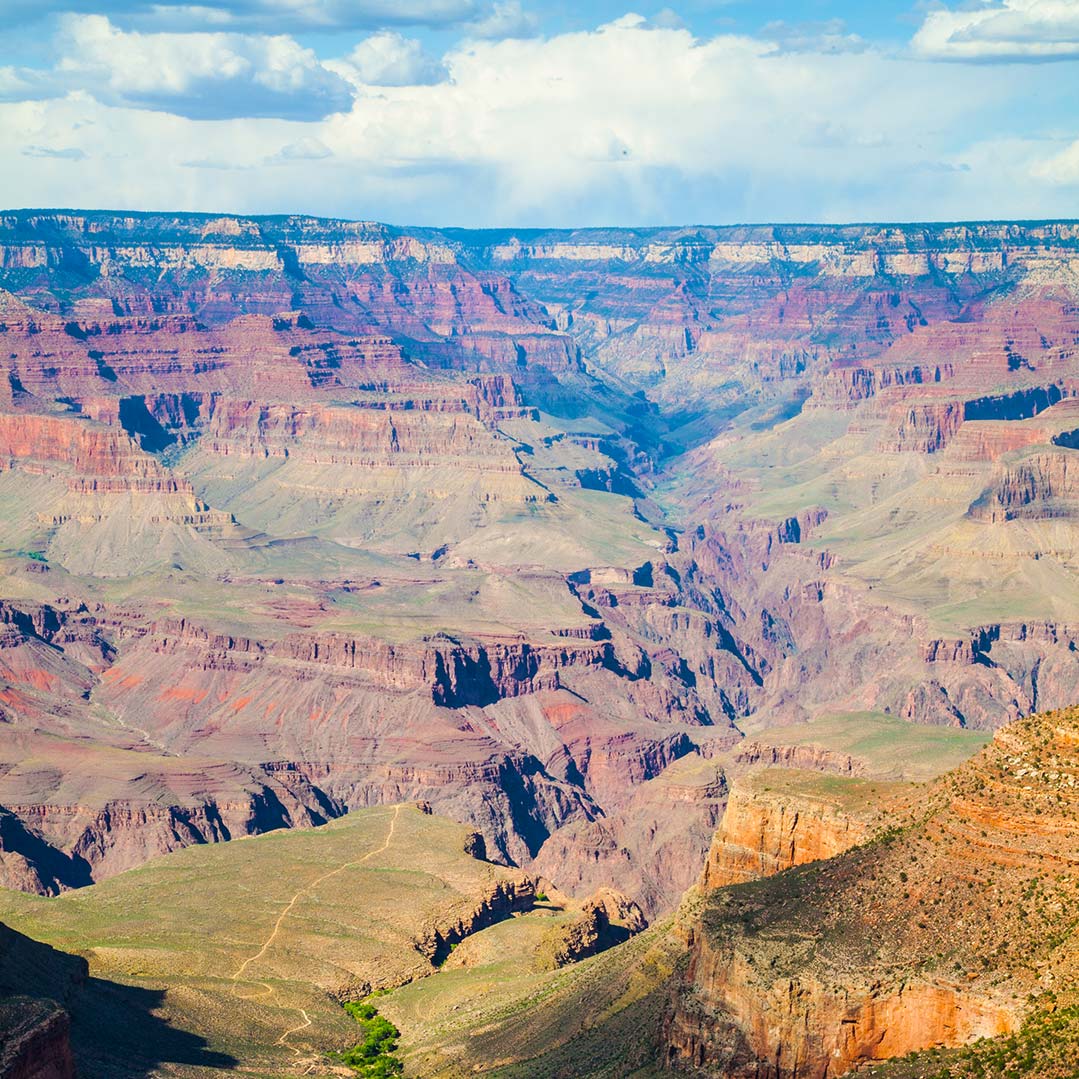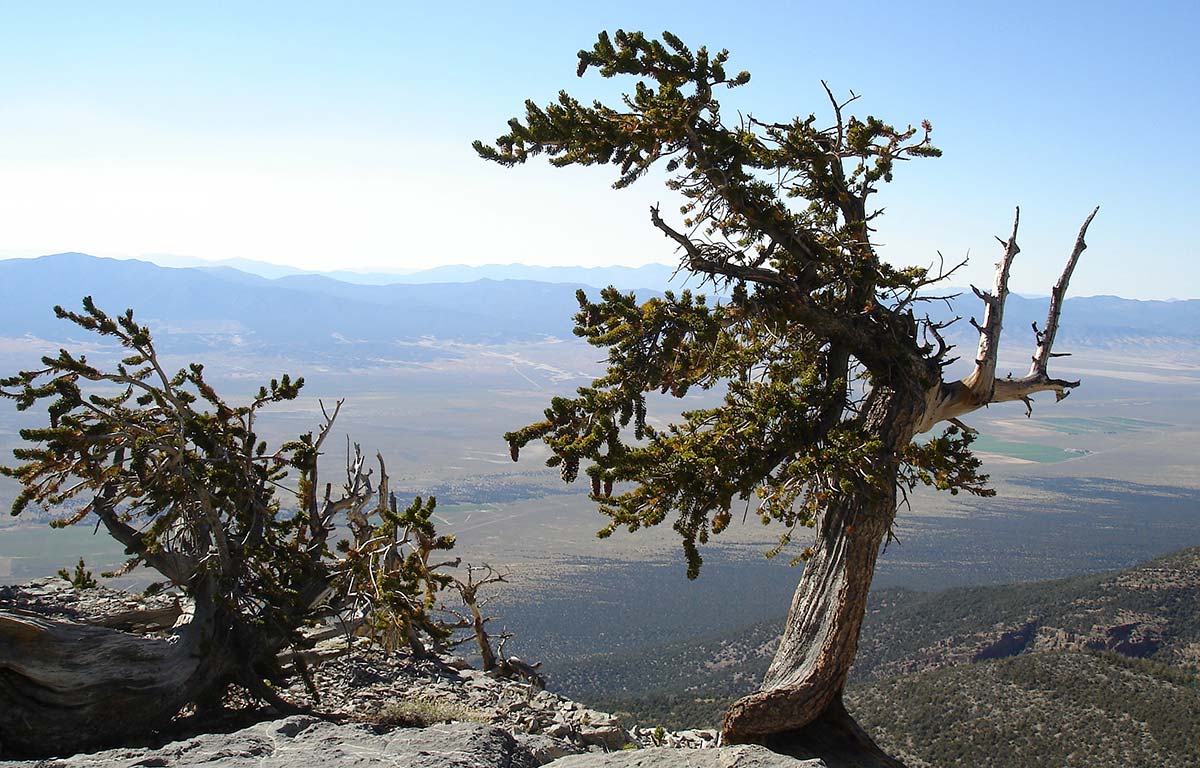The National Park Service manages more than 400 individual units, from national parks to national battlefields to national lakeshores and more, all commonly referred to simply as “parks.” Some current parks were set aside for the benefit of the public or preservation before the National Park Service was created in 1916. Others were eventually transferred from another agency.
This table lists the dates parks were created and when they became part of the National Park System.
| Year | Date | Park Name and Location |
|---|---|---|
| 1790 | July 16 | National Mall, District of Columbia |
| 1792 | October 10 | White House (Presidents Park), District of Columbia (transferred to the NPS August 10, 1933) |
| 1832 | April 20 | Hot Springs National Park, Arkansas (proclaimed Hot Springs Reservation; redesignated 1921) |
| 1866 | April 7 | Ford's Theatre, District of Columbia (acquisition authorized; designated a National Historic Site 1970) |
| 1872 | March 1 | Yellowstone National Park, Idaho, Montana, and Wyoming |
| 1876 | August 2 | Washington Monument, District of Columbia (accepted; dedicated 1885) |
| 1877 | March 3 | Statue of Liberty, New York (accepted; dedicated 1886; designated a National Monument 1924) |
| 1886 | December 7 | Little Bighorn Battlefield National Monument, Montana (renamed from Custer Battlefield National Monument 1991; redesignated 1946 from National Cemetery of Custer's Battlefield Reservation) |
| 1889 | March 2 | Casa Grande Ruins National Monument, Arizona (authorized as Casa Grande Ruin Reservation; redesignated 1918) |
| 1890 | August 19 | Chickamauga and Chattanooga National Military Park, Georgia and Tennessee |
| 1890 | August 30 | Antietam National Battlefield, Maryland (transferred to NPS on August 10, 1933; redesignated from a National Battlefield Site 1978) |
| 1890 | September 25 | Sequoia National Park, California |
| 1890 | September 27 | Rock Creek Park, District of Columbia |
| 1890 | October 1 | Kings Canyon National Park, California (incorporated General Grant National Park 1940) |
| 1890 | October 1 | Yosemite National Park, California (incorporated Yosemite State Park 1906) |
| 1894 | December 27 | Shiloh National Military Park, Tennessee |
| 1895 | February 11 | Gettysburg National Military Park, Pennsylvania |
| 1899 | February 21 | Vicksburg National Military Park, Mississippi |
| 1899 | March 2 | Mount Rainier National Park, Washington |
| 1902 | May 22 | Crater Lake National Park, Oregon |
| 1902 | July 1 | Chickasaw National Recreation Area, Oklahoma (incorporated Platt National Park and Arbuckle National Recreation Area March 17, 1976) |
| 1903 | January 9 | Wind Cave National Park, South Dakota |
| 1906 | June 29 | Mesa Verde National Park, Colorado |
| 1906 | September 24 | Devils Tower National Monument, Wyoming |
| 1906 | December 8 | El Morro National Monument, New Mexico |
| 1906 | December 8 | Montezuma Castle National Monument, Arizona |
| 1906 | December 8 | Petrified Forest National Park, Arizona (redesignated from a National Monument 1962) |
| 1907 | March 4 | Jean Lafitte National Historical Park and Preserve, Louisiana (incorporated Chalmette National Historical Park 1978) |
| 1907 | May 6 | Lassen Volcanic National Park, California (incorporated Cinder Cone and Lassen Peak NMs August 9, 1916) |
| 1907 | November 16 | Gila Cliff Dwellings National Monument, New Mexico |
| 1907 | December 19 | Tonto National Monument, Arizona |
| 1907 | March 11 | Chaco Culture National Historical Park, New Mexico (incorporated Chaco Canyon National Monument Dec. 19, 1980) |
| 1908 | January 9 | Muir Woods National Monument, California |
| 1908 | January 16 | Pinnacles National Park, California (redesignated from a National Monument 2013) |
| 1908 | February 7 | Jewel Cave National Monument, South Dakota |
| 1908 | April 16 | Natural Bridges National Monument, Utah |
| 1908 | September 15 | Tumacacori National Historical Park, Arizona (incorporated National Monument 1990) |
| 1909 | March 2 | Olympic National Park, Washington (incorporated Mount Olympus National Monument) |
| 1909 | March 20 | Navajo National Monument, Arizona |
| 1909 | July 12 | Oregon Caves National Monument, Oregon |
| 1909 | July 31 | Zion National Park, Utah (incorporated Zion National Monument 1956; incorporated Mukuntuweap National Monument 1918) |
| 1910 | March 23 | Sitka National Historical Park, Alaska (redesignated from a National Monument 1972) |
| 1910 | May 11 | Glacier National Park, Montana |
| 1910 | May 30 | Rainbow Bridge National Monument, Utah |
| 1910 | June 23 | Big Hole Battlefield National Battlefield, Montana (set aside as a military reserve in 1883; redesignated from a National Monument 1963) |
| 1911 | February 9 | Lincoln Memorial, District of Columbia (dedicated 1922) |
| 1911 | May 24 | Colorado National Monument, Colorado |
| 1911 | July 6 | Devils Postpile National Monument, California |
| 1913 | October 14 | Cabrillo National Monument, California |
| 1915 | January 26 | Rocky Mountain National Park, Colorado |
| 1915 | October 4 | Dinosaur National Monument, Colorado |
| 1915 | November 30 | Walnut Canyon National Monument, Arizona |
| 1916 | February 11 | Bandelier National Monument, New Mexico |
| 1916 | July 8 | Acadia National Park, Maine (originally Sieur de Monts National Monument; redesignated Lafayette National Park 1919; redesignated Acadia National Park 1919) |
| 1916 | July 17 | Abraham Lincoln Birthplace National Historical Park, Kentucky (originally Abraham Lincoln National Park; redesignated a National Historic Site 1939; renamed and redesignated 1959; redesignated a National Historical Park 2009) |
| 1916 | August 1 | Haleakala National Park, Hawaii (detached from Hawaii National Park 1960) |
| 1916 | August 1 | Hawaii Volcanoes National Park, Hawaii (split into Haleakala National Park and Hawaii National Park 1960; latter redesignated Hawaii Volcanoes National Park 1961) |
| 1916 | August 9 | Capulin Volcano National Monument, New Mexico (redesignated from Capulin Mountain National Monument 1987) |
| 1917 | February 18 | Kennesaw Mountain National Battlefield Park, Georgia (originally a NBS; redesignated 1935) |
| 1917 | February 26 | Denali National Park and Denali National Preserve, Alaska (incorporated Mount McKinley National Park and Denali National Monument by ANILCA 1980) |
| 1917 | March 2 | Guilford Courthouse National Military Park, North Carolina |
| 1918 | September 24 | Katmai National Park and Katmai National Preserve, Alaska (originally a National Monument, redesignated by ANILCA 1980) |
| 1919 | February 26 | Grand Canyon National Park, Arizona (incorporated 1908 Grand Canyon National Monument) |
| 1919 | December 12 | Scotts Bluff National Monument, Nebraska |
| 1919 | December 19 | Yucca House National Monument, Colorado |
| 1922 | January 24 | Great Basin National Park, Nevada (incorporated Lehman Caves National Monument 1986) |
| 1922 | October 14 | Timpanogos Cave, Utah |
| 1923 | January 21 | Aztec Ruins National Monument, New Mexico (redesignated 1928) |
| 1923 | March 2 | Hovenweep National Monument, Utah |
| 1923 | May 31 | Pipe Spring National Monument, Arizona |
| 1923 | June 8 | Bryce Canyon National Park, Utah (redesignated Utah National Park 1924; redesignated from Bryce Canyon National Monument 1928) |
| 1923 | October 25 | Carlsbad Caverns National Park, New Mexico (redesignated from Carlsbad Cave National Monument 1930) |
| 1923 | March 2 | Hopewell Culture National Historical Park, Ohio (incorporated Mound City Group National Monument 1992) |
| 1924 | April 18 | Chiricahua National Monument, Arizona |
| 1924 | May 2 | Craters of the Moon National Monument and Craters of the Moon National Preserve, Idaho (preserve designated August 21, 2002) |
| 1924 | October 15 | Castillo de San Marcos National Monument, Florida (redesignated from Fort Marion National Monument 1942) |
| 1924 | October 15 | Fort Matanzas National Monument, Florida |
| 1924 | October 15 | Fort Pulaski, Georgia |
| 1924 | December 9 | Wupatki National Monument, Arizona |
| 1925 | February 26 | Glacier Bay National Park and Glacier Bay National Preserve, Alaska (originally a National Monument; redesignated by ANILCA 1980) |
| 1925 | March 3 | Fort McHenry National Monument and Historic Shrine, Maryland (redesignated from Fort McHenry National Park 1939) |
| 1925 | March 4 | Arlington House, The Robert E. Lee Memorial, Virginia (date restoration authorized; designated Custis-Lee Mansion 1955; redesignated 1972) |
| 1925 | November 21 | Lava Beds National Monument, California |
| 1925 | March 3 | Mount Rushmore National Memorial, South Dakota (acquired 1939) |
| 1926 | May 22 | Shenandoah National Park, Virginia |
| 1926 | May 22 | Great Smoky Mountains National Park, North Carolina and Tennessee |
| 1926 | May 25 | Mammoth Cave National Park, Kentucky |
| 1926 | June 2 | Moores Creek National Battlefield, North Carolina (originally a National Military Park; redesignated 1980) |
| 1926 | July 3 | Petersburg National Military Park, Virginia (redesignated a National Battlefield 1962) |
| 1927 | February 14 | Fredericksburg and Spotsylvania County Battlefields Memorial National Military Park, Virginia |
| 1927 | March 2 | Wright Brothers National Memorial, North Carolina (originally Kill Devil Hill Monument, redesignated 1953) |
| 1927 | March 3 | Stones River National Battlefield, Tennessee (originally a National Military Park; redesignated 1980) |
| 1929 | February 21 | Brices Cross Roads NBS, Mississippi |
| 1929 | February 26 | Grand Teton National Park, Wyoming (incorporated 1929 National Park and Jackson Hole National Monument) |
| 1929 | March 4 | Cowpens National Battlefield, South Carolina (transferred to NPS August 10, 1933; redesignated from a national battlefield site in 1972) |
| 1929 | April 12 | Arches National Park, Utah (redesignated from a National Monument 1978) |
| 1930 | January 23 | George Washington Birthplace National Monument, Virginia |
| 1930 | May 26 | Sunset Crater Volcano National Monument, Arizona (redesignated from Sunset Crater Volcano National Monument 1990) |
| 1930 | May 29 | George Washington Memorial Parkway, Virginia (incorporated Mount Vernon Memorial Highway May 23, 1928) |
| 1930 | June 18 | Appomattox Court House National Historical Park, Virginia (authorized as a national historical monument 1935; redesignated 1954) |
| 1930 | December 30 | Colonial National Historical Park, Virginia (authorized July 3, 1930; redesignated from a National Monument 1936) |
| 1931 | February 14 | Canyon de Chelly National Monument, Arizona |
| 1931 | March 3 | Isle Royale National Park, Michigan |
| 1931 | March 4 | Fort Necessity National Battlefield, Pennsylvania (redesignated from a NBS 1961) |
| 1932 | March 17 | Great Sand Dunes National Park and Great Sand Dunes National Preserve, Colorado (National Preserve authorized 2000; redesignated from a National Monument 2004) |
| 1932 | May 21 | Theodore Roosevelt Island, District of Columbia |
| 1933 | January 18 | White Sands National Monument, New Mexico |
| 1933 | February 11 | Death Valley National Park, California (incorporated Death Valley National Monument) |
| 1933 | March 1 | Saguaro National Park, Arizona (redesignated from a National Monument 1994) |
| 1933 | March 2 | Black Canyon of the Gunnison National Park, Colorado (redesignated from a National Monument 1999) |
| 1933 | June 16 | Blue Ridge Parkway, North Carolina and Virginia |
| 1933 | August 22 | Cedar Breaks National Monument, Utah |
| 1933 | March 2 | Morristown National Historical Park, New Jersey |
| 1933 | August 10 | Fort Donelson National Battlefield, Tennessee |
| 1933 | August 10 | Kings Mountain National Military Park, South Carolina |
| 1933 | August 10 | Tupelo National Battlefield, Mississippi |
| 1933 | August 10 | National Capital Parks, District of Columbia (incorporated Baltimore-Washington Parkway 1975) |
| 1934 | May 30 | Everglades National Park, Florida |
| 1934 | June 19 | Natchez Trace Parkway, Mississippi (incorporated Ackia Battleground National Monument and Meriwether Lewis National Monument 1961) |
| 1934 | June 21 | Monocacy National Battlefield, Maryland (reauthorized and redesignated from a National Military Park Oct. 21, 1976) |
| 1934 | June 26 | Thomas Jefferson Memorial, District of Columbia (dedicated 1943) |
| 1934 | June 14 | Ocmulgee National Monument, Georgia |
| 1935 | June 20 | Big Bend National Park, Texas |
| 1935 | August 21 | Fort Stanwix National Monument, New York (acquired 1973) |
| 1935 | August 29 | Andrew Johnson National Historic Site, Tennessee (redesignated from a National Monument 1963) |
| 1935 | December 21 | Jefferson National Expansion Memorial, Missouri (Gateway Arch authorized 1954) |
| 1936 | March 2 | Richmond National Battlefield Park, Virginia |
| 1936 | March 19 | Homestead National Monument of America, Nebraska |
| 1936 | May 26 | Fort Frederica National Monument, Georgia |
| 1936 | June 2 | Perry's Victory and International Peace Memorial, Ohio (redesignated 1972) |
| 1936 | June 29 | Whitman Mission National Historic Site, Washington (redesignated from Whitman National Monument 1963) |
| 1936 | August 10 | Joshua Tree National Park, California (incorporated Joshua Tree National Monument 1994) |
| 1936 | November 14 | Catoctin Mountain Park, Maryland (renamed from Catoctin Recreational Demonstration Area 1954) |
| 1936 | November 14 | Manassas National Battlefield Park, Virginia (redesignated from Bull Run Recreational Demonstration Area May 10, 1940) |
| 1936 | November 14 | Prince William Forest Park, Virginia (redesignated from Chopawamsic Recreational Demonstration Area 1948) |
| 1937 | April 13 | Organ Pipe Cactus National Monument, Arizona |
| 1937 | August 2 | Capitol Reef National Park, Utah (redesignated from a National Monument 1971) |
| 1937 | August 17 | Cape Hatteras National Seashore, North Carolina |
| 1937 | August 25 | Pipestone National Monument, Minnesota |
| 1938 | March 17 | Salem Maritime National Historic Site, Massachusetts |
| 1938 | April 26 | Channel Islands National Park, California (incorporated Channel Islands National Monument 1980) |
| 1938 | June 1 | Saratoga National Historical Park, New York |
| 1938 | July 16 | Fort Laramie National Historic Site, Wyoming (redesignated from a National Monument 1960) |
| 1938 | August 3 | Hopewell Furnace National Historic Site, Pennsylvania (redesignated from Hopewell Village National Historic Site 1985) |
| 1938 | September 23 | Chesapeake and Ohio Canal, District of Columbia, Maryland, and West Virginia (date acquired; designated a National Monument 1961; incorporated in Chesapeake and Ohio Canal National Historical Park 1971) |
| 1939 | May 26 | Federal Hall National Memorial, New York (redesignated from Federal Hall Memorial National Historic Site 1955) |
| 1939 | July 25 | Tuzigoot National Monument, Arizona |
| 1939 | January 25 | Badlands National Park, South Dakota (redesignated from a National Monument 1978) |
| 1940 | June 11 | Cumberland Gap National Historical Park, Kentucky, Tennessee, and Virginia |
| 1940 | December 18 | Vanderbilt Mansion National Historic Site, New York |
| 1940 | August 12 | Fort Washington Park, Maryland (transferred from War Dept. 1940) |
| 1941 | April 5 | Fort Raleigh National Historic Site, North Carolina |
| 1943 | July 14 | George Washington Carver National Monument, Missouri |
| 1944 | January 15 | Home of Franklin D. Roosevelt National Historic Site, New York |
| 1944 | June 30 | Harpers Ferry National Historical Park, West Virginia (redesignated from a National Monument 1963) |
| 1946 | August 12 | Castle Clinton National Monument, New York |
| 1946 | December 9 | Adams National Historical Park, Massachusetts (originally Adams Mansion National Historic Site; redesignated Adams National Historic Site 1952; redesignated National Historical Park 1998) |
| 1946 | December 18 | Lake Roosevelt National Recreation Area, Washington (administered under cooparative agreement starting 1990; redesignated from Coulee Dam National Recreation Area 1997) |
| 1947 | April 25 | Theodore Roosevelt National Park, North Dakota (authorized Theodore Roosevelt National Memorial Park, redesignated 1978) |
| 1948 | April 28 | Fort Sumter National Monument, South Carolina |
| 1948 | June 22 | Hampton National Historic Site, Maryland |
| 1948 | June 28 | Independence National Historical Park, Pennsylvania (incorporated Independence Hall National Historic Site, designated 1943) |
| 1948 | March 11 | De Soto National Memorial, Florida |
| 1948 | June 19 | Fort Vancouver National Historic Site, Washington (redesignated from a National Monument 1961) |
| 1949 | February 14 | San Juan National Historic Site, Puerto Rico |
| 1949 | June 8 | Saint Croix Island National Monument, Maine (redesignated an International Historic Site 1984) |
| 1949 | October 25 | Effigy Mounds National Monument, Iowa |
| 1950 | August 3 | Greenbelt Park, Maryland |
| 1950 | September 21 | Fort Caroline National Memorial, Florida |
| 1952 | March 4 | Christiansted National Historic Site, Virgin Islands (redesignated from Virgin Islands National Historic Site 1961) |
| 1952 | July 9 | Coronado National Memorial, Arizona |
| 1954 | June 28 | Fort Union National Monument, New Mexico |
| 1955 | July 26 | Pu’uhonua o HÅ,naunau National Historical Park, Hawaii (redesignated from City of Refuge National Historical Park 1978) |
| 1955 | December 6 | Thomas Edison National Historical Park, New Jersey (originally Edison Home National Historic Site; incorporated in Edison National Historic Site 1962; redesignated 2009) |
| 1956 | April 2 | Booker T. Washington National Monument, Virginia |
| 1956 | July 20 | Pea Ridge National Military Park, Arkansas |
| 1956 | July 25 | Horseshoe Bend National Military Park, Alabama |
| 1956 | August 2 | Virgin Islands National Park, Virgin Islands |
| 1958 | April 18 | Glen Canyon National Recreation Area, Utah |
| 1958 | May 29 | Lewis and Clark National Historical Park, Oregon (incorporated Fort Clatsop National Monument October 30, 2004) |
| 1958 | August 14 | General Grant National Memorial, New York |
| 1958 | September 2 | Grand Portage National Monument, Minnesota (designated a National Historic Site 1951) |
| 1959 | April 14 | Minute Man National Historic Site, Massachusetts (redesignated a National Historical Park Sept. 21, 1959) |
| 1959 | September 5 | Franklin Delano Roosevelt Memorial, District of Columbia (dedicated 1997) |
| 1960 | April 22 | Wilson's Creek National Battlefield, Missouri (redesignated from a National Park 1970) |
| 1960 | June 3 | Bent's Old Fort National Historic Site, Colorado |
| 1960 | July 6 | Arkansas Post National Memorial, Arkansas |
| 1961 | May 11 | Russell Cave National Monument, Alabama |
| 1961 | August 7 | Cape Cod National Seashore, Massachusetts |
| 1961 | September 8 | Fort Davis National Historic Site, Texas |
| 1961 | September 13 | Fort Smith National Historic Site, Arkansas |
| 1961 | October 4 | Piscataway Park, Maryland |
| 1961 | December 28 | Buck Island Reef National Monument, Virgin Islands |
| 1962 | February 19 | Lincoln Boyhood National Memorial, Indiana |
| 1962 | April 27 | Hamilton Grange National Memorial, New York |
| 1962 | July 25 | Sagamore Hill National Historic Site, New York |
| 1962 | July 25 | Theodore Roosevelt Birthplace National Historic Site, New York |
| 1962 | September 5 | Frederick Douglass National Historic Site, District of Columbia (redesignated from Frederick Douglass Home 1988) |
| 1962 | September 13 | Point Reyes National Seashore, California |
| 1962 | September 28 | Padre Island National Seashore, Texas |
| 1964 | August 27 | Ozark National Scenic Riverways, Missouri |
| 1964 | August 30 | Fort Bowie National Historic Site, Arizona |
| 1964 | August 31 | Fort Larned National Historic Site, Kansas |
| 1964 | August 31 | Allegheny Portage Railroad National Historic Site, Pennsylvania |
| 1964 | August 31 | Johnstown Flood National Memorial, Pennsylvania |
| 1964 | August 31 | Saint-Gaudens National Historic Site, New Hampshire |
| 1964 | August 31 | John Muir National Historic Site, California |
| 1964 | September 11 | Fire Island National Seashore, New York |
| 1964 | September 12 | Canyonlands National Park, Utah |
| 1964 | October 8 | Lake Mead National Recreation Area |
| 1965 | February 11 | Curecanti National Recreation Area, Colorado |
| 1965 | March 15 | Lake Meredith National Recreation Area, Texas (name changed from Sanford National Recreation Area, 1972; redesignated Nov. 28, 1990) |
| 1965 | May 15 | Nez Perce National Historical Park, Idaho |
| 1965 | June 5 | Agate Fossil Beds National Monument, Nebraska |
| 1965 | June 28 | Pecos National Historical Park, New Mexico (incorporated Pecos National Monument June 27, 1990) |
| 1965 | July 30 | Golden Spike National Historic Site, Utah (designated 1957) |
| 1965 | August 12 | Herbert Hoover National Historic Site, Iowa |
| 1965 | August 21 | Alibates Flint Quarries National Monument, Texas (formerly Alibates Flint Quarries and Texas Panhandle Pueblo Culture National Monument, redesignated 1978) |
| 1965 | August 28 | Hubbell Trading Post National Historic Site, Arizona |
| 1965 | September 1 | Delaware Water Gap National Recreation Area, Pennsylvania |
| 1965 | September 21 | Assateague Island National Seashore, Maryland |
| 1965 | October 22 | Roger Williams National Memorial, Rhode Island |
| 1965 | November 11 | Amistad National Recreation Area, Texas (redesignated 1990) |
| 1965 | November 8 | Whiskeytown-Shasta-Trinity National Recreation Area, California (Whiskeytown Unit) |
| 1966 | March 10 | Cape Lookout National Seashore, North Carolina |
| 1966 | June 20 | Fort Union Trading Post National Historic Site, Montana and North Dakota |
| 1966 | June 30 | Chamizal National Memorial, Texas |
| 1966 | July 23 | George Rogers Clark National Historical Park, Indiana |
| 1966 | September 9 | San Juan Island National Historical Park, Washington |
| 1966 | October 15 | Bighorn Canyon National Recreation Area, Montana and Wyoming |
| 1966 | October 15 | Guadalupe Mountains National Park, Texas |
| 1966 | October 15 | Pictured Rocks National Lakeshore, Michigan |
| 1966 | October 15 | Wolf Trap National Park for the Performing Arts, Virginia |
| 1966 | November 2 | Theodore Roosevelt Inaugural National Historic Site, New York |
| 1966 | November 5 | Indiana Dunes National Lakeshore, Indiana |
| 1967 | May 26 | John Fitzgerald Kennedy National Historic Site, Massachusetts |
| 1967 | November 27 | Eisenhower National Historic Site, Pennsylvania |
| 1968 | April 5 | Saugus Iron Works National Historic Site, Massachusetts |
| 1968 | October 2 | Saint Croix National Scenic Riverway, Wisconsin |
| 1968 | October 2 | Appalachian National Scenic Trail, Maine |
| 1968 | October 2 | Lake Chelan National Recreation Area, Washington |
| 1968 | October 2 | North Cascades National Park, Washington |
| 1968 | October 2 | Redwood National Park, California |
| 1968 | October 2 | Ross Lake National Recreation Area, Washington |
| 1968 | October 17 | Carl Sandburg Home National Historic Site, North Carolina |
| 1968 | October 18 | Biscayne National Park, Florida (incorporated Biscayne National Monument 1980) |
| 1969 | August 20 | Florissant Fossil Beds National Monument, Colorado |
| 1969 | December 2 | Lyndon B. Johnson National Historical Park, Texas (redesignated from a National Historic Site 1980) |
| 1969 | December 2 | William Howard Taft National Historic Site, Ohio |
| 1970 | September 26 | Apostle Islands National Lakeshore, Wisconsin |
| 1970 | October 16 | Fort Point National Historic Site, California |
| 1970 | October 16 | Andersonville National Historic Site, Georgia |
| 1970 | October 21 | Sleeping Bear Dunes National Lakeshore, Michigan |
| 1971 | January 8 | Voyageurs National Park, Minnesota |
| 1971 | January 8 | Chesapeake and Ohio Canal National Historical Park, District of Columbia, Maryland, and West Virginia (incorporated Chesapeake and Ohio Canal National Monument) |
| 1971 | January 8 | Gulf Islands National Seashore, Florida and Mississippi |
| 1971 | August 18 | Lincoln Home National Historic Site, Illinois |
| 1972 | March 1 | Buffalo National River, Arkansas |
| 1972 | August 17 | Pu`ukoholÄ, Heiau National Historic Site, Hawaii |
| 1972 | August 25 | Grant-Kohrs Ranch National Historic Site, Montana |
| 1972 | August 25 | John D. Rockefeller, Jr., Memorial Parkway, Wyoming |
| 1972 | October 9 | Longfellow House – Washington’s Headquarters National Historic Site, Massachusetts (redesignated from Longfellow National Historic Site 2010) |
| 1972 | October 21 | Hohokam Pima National Monument, Arizona |
| 1972 | October 21 | Thaddeus Kosciuszko National Memorial, Pennsylvania |
| 1972 | October 23 | Fossil Butte National Monument, Wyoming |
| 1972 | October 23 | Cumberland Island National Seashore, Georgia |
| 1972 | October 27 | Gateway National Recreation Area, New York |
| 1972 | October 27 | Golden Gate National Recreation Area, California |
| 1973 | December 28 | Lyndon Baines Johnson Memorial Grove on the Potomac, District of Columbia |
| 1974 | March 7 | Big South Fork National River and Recreation Area, Tennessee |
| 1974 | August 1 | Constitution Gardens, District of Columbia |
| 1974 | October 1 | Boston National Historical Park, Massachusetts |
| 1974 | October 11 | Big Thicket National Preserve, Texas |
| 1974 | October 11 | Big Cypress National Preserve, Florida |
| 1974 | October 26 | Knife River Indian Villages National Historic Site, North Dakota |
| 1974 | October 26 | Clara Barton National Historic Site, Maryland |
| 1974 | October 26 | Martin Van Buren National Historic Site, New York |
| 1974 | October 26 | Springfield Armory National Historic Site, Massachusetts |
| 1974 | October 26 | Tuskegee Institute National Historic Site, Alabama |
| 1975 | October 8 | John Day Fossil Beds National Monument, Oregon |
| 1975 | January 3 | Canaveral National Seashore, Florida |
| 1975 | June 26 | Cuyahoga Valley National Park, Ohio (redesignated from a National Recreation Area 2000) |
| 1976 | June 30 | Klondike Gold Rush National Historical Park, Alaska and Washington |
| 1976 | July 4 | Valley Forge National Historical Park, Pennsylvania |
| 1976 | August 19 | Ninety Six National Historic Site, South Carolina |
| 1976 | October 12 | Obed WSR, Tennessee |
| 1976 | October 18 | Eugene O'Neill National Historic Site, California |
| 1976 | October 18 | Congaree National Park, South Carolina (redesignated from a National Monument 2003) |
| 1977 | May 26 | Eleanor Roosevelt National Historic Site, New York |
| 1978 | June 5 | Lowell National Historical Park, Massachusetts |
| 1978 | August 15 | War in the Pacific National Historical Park, Guam |
| 1978 | August 15 | Chattahoochee National Recreation Area, Georgia |
| 1978 | October 19 | Fort Scott National Historic Site, Kansas |
| 1978 | November 10 | Palo Alto Battlefield National Historical Park, Texas (redesignated from a National Historic Site 2009) |
| 1978 | November 10 | Rio Grande WSR, Texas |
| 1978 | November 10 | San Antonio Missions National Historical Park, Texas |
| 1978 | November 10 | Missouri National Recreational River, Nebraska |
| 1978 | November 10 | Edgar Allan Poe National Historic Site, Pennsylvania |
| 1978 | November 10 | Friendship Hill National Historic Site, Pennsylvania |
| 1978 | November 10 | Maggie L. Walker National Historic Site, Virginia |
| 1978 | November 10 | Middle Delaware National Scenic River, Pennsylvania |
| 1978 | November 10 | New River Gorge National River, West Virginia |
| 1978 | November 10 | Saint Paul's Church National Historic Site, New York (designated 1943) |
| 1978 | November 10 | Thomas Stone National Historic Site, Maryland |
| 1978 | November 10 | Upper Delaware Scenic and Recreational River, Pennsylvania |
| 1978 | November 10 | Ebey's Landing National Historical Reserve, Washington |
| 1978 | November 10 | Kaloko-Honokohau National Historical Park, Hawaii |
| 1978 | November 10 | Santa Monica Mountains National Recreation Area, California |
| 1978 | December 1 | Aniakchak National Monument and Aniakchak National Preserve, Alaska (originally Aniakchak National Monument; designated National Monument and National Preserve by ANILCA 1980) |
| 1978 | December 1 | Bering Land Bridge National Preserve, Alaska (redesignated from a National Monument by ANILCA 1980) |
| 1978 | December 1 | Cape Krusenstern National Monument, Alaska |
| 1978 | December 1 | Gates of the Arctic National Park and Gates of the Arctic National Preserve, Alaska (originally a National Monument; redesignated by ANILCA 1980) |
| 1978 | December 1 | Kenai Fjords National Park, Alaska (redesignated from a National Monument by ANILCA 1980) |
| 1978 | December 1 | Kobuk Valley National Park, Alaska (redesignated from a National Park by ANILCA 1980) |
| 1978 | December 1 | Lake Clark National Park and Lake Clark National Preserve, Alaska (originally a National Monument; redesignated by ANILCA 1980) |
| 1978 | December 1 | Noatak National Preserve, Alaska (incorporated Noatak National Monument by ANILCA 1980) |
| 1978 | December 1 | Wrangell-St. Elias National Park and Wrangell-St. Elias National Preserve, Alaska (incorporated Wrangell-St. Elias National Monument by ANILCA 1980) |
| 1978 | December 1 | Yukon-Charley Rivers National Preserve, Alaska (redesignated from Yukon-Charley National Monument by ANILCA 1980) |
| 1979 | October 12 | Frederick Law Olmsted National Historic Site, Massachusetts |
| 1980 | September 9 | World War II Valor in the Pacific National Monument, Hawaii (incorp. USS Arizona Memorial 2008) |
| 1980 | July 1 | Vietnam Veterans Memorial, District of Columbia (dedicated 1982) |
| 1980 | October 10 | Boston African American National Historic Site, Massachusetts |
| 1980 | October 10 | Martin Luther King, Junior, National Historic Site, Georgia |
| 1980 | December 2 | Alagnak Wild River, Alaska |
| 1980 | December 19 | Salinas Pueblo Missions National Monument, New Mexico (proclaimed Gran Quivira National Monument 1909; renamed Salinas National Monument 1980, renamed 1988) |
| 1980 | December 22 | Kalaupapa National Historical Park, Hawaii |
| 1980 | December 28 | James A. Garfield National Historic Site, Ohio |
| 1980 | December 28 | Women's Rights National Historical Park, New York |
| 1983 | March 28 | Potomac Heritage National Scenic Trail, District of Columbia, Maryland, Pennsylvania, and Virginia |
| 1983 | March 28 | Natchez Trace National Scenic Trail, Mississippi |
| 1983 | May 23 | Harry S Truman National Historic Site, Missouri (designated 1982) |
| 1986 | October 28 | Korean War Veterans Memorial, District of Columbia (dedicated 1995) |
| 1986 | October 30 | Steamtown National Historic Site, Pennsylvania |
| 1987 | September 30 | Pennsylvania Avenue National Historic Site, District of Columbia (designated 1965) |
| 1987 | December 23 | Jimmy Carter National Historic Site, Georgia |
| 1987 | December 31 | El Malpais National Monument, New Mexico |
| 1988 | February 16 | Timucuan Ecological and Historic Preserve, Florida |
| 1988 | June 27 | San Francisco Maritime National Historical Park, California (formerly part of Golden Gate National Recreation Area) |
| 1988 | September 8 | Charles Pinckney National Historic Site, South Carolina |
| 1988 | October 7 | Natchez National Historical Park, Mississippi |
| 1988 | October 31 | National Park of American Samoa, American Samoa |
| 1988 | October 31 | Poverty Point National Monument, Louisiana |
| 1988 | November 18 | Mississippi National River and Recreation Area, Minnesota |
| 1988 | November 18 | City of Rocks National Reserve, Idaho |
| 1988 | November 18 | Hagerman Fossil Beds National Monument, Idaho |
| 1988 | December 26 | Bluestone National Scenic River, West Virginia |
| 1988 | December 26 | Gauley River National Recreation Area, West Virginia |
| 1989 | October 2 | Ulysses S. Grant National Historic Site, Missouri |
| 1990 | June 27 | Petroglyph National Monument, New Mexico |
| 1990 | October 31 | Weir Farm National Historic Site, Connecticut |
| 1991 | May 24 | Niobrara National Scenic River, Nebraska |
| 1991 | December 11 | Mary McLeod Bethune Council House National Historic Site, District of Columbia (designated 1982) |
| 1992 | February 24 | Salt River Bay National Historical Park and Ecological Preserve, Virgin Islands |
| 1992 | March 3 | Manzanar National Historic Site, California |
| 1992 | August 26 | Marsh-Billings National Historical Park, Vermont (redesignated Marsh-Billings-Rockefeller National Historical Park 1998) |
| 1992 | October 16 | Dayton Aviation Heritage National Historical Park, Ohio |
| 1992 | October 21 | Little River Canyon National Preserve, Alabama |
| 1992 | October 26 | Brown v. Board of Education National Historic Site, Kansas |
| 1992 | October 27 | Keweenaw National Historical Park, Michigan |
| 1992 | October 27 | Great Egg Harbor Scenic and Recreational River, New Jersey |
| 1992 | October 26 | Dry Tortugas National Park, Florida (proclaimed Fort Jefferson National Monument 1935) |
| 1994 | October 31 | Mojave National Preserve, California |
| 1994 | October 31 | New Orleans Jazz National Historical Park, Louisiana |
| 1994 | November 2 | Cane River Creole National Historical Park, Louisiana |
| 1996 | November 12 | Washita Battlefield National Historic Site, Oklahoma |
| 1996 | November 12 | Nicodemus National Historic Site, Kansas |
| 1996 | November 12 | Tallgrass Prairie National Preserve, Kansas |
| 1996 | November 12 | Boston Harbor Islands National Recreation Area, Massachusetts |
| 1996 | November 12 | New Bedford Whaling National Historical Park, Massachusetts |
| 1998 | November 6 | Little Rock Central High School National Historic Site, Arkansas |
| 1998 | November 6 | Tuskegee Airmen National Historic Site, Alabama |
| 1999 | November 29 | Minuteman Missile National Historic Site, South Dakota |
| 2000 | October 11 | First Ladies National Historic Site, Ohio |
| 2000 | October 24 | Rosie the Riveter WWII Home Front National Historical Park, California |
| 2001 | January 17 | Virgin Islands Coral Reef National Monument, Virgin Islands |
| 2001 | January 19 | Governors Island National Monument, New York |
| 2001 | September 19 | Minidoka National Historic Site, Idaho (established Minidoka Internment National Monument August 1942; redesignated Minidoka National Historic Site 2008 |
| 2002 | September 24 | Flight 93 National Memorial, Pennsylvania |
| 2002 | December 19 | Cedar Creek & Belle Grove National Historical Park, Virginia |
| 2004 | May 29 | World War II Memorial, District of Columbia (authorized May 25, 1993) |
| 2006 | February 27 | Carter G. Woodson Home National Historic Site, District of Columbia |
| 2006 | February 27 | African Burial Ground National Monument, New York |
| 2007 | April 27 | Sand Creek Massacre National Historic Site, Colorado |
| 2009 | October 28 | Port Chicago Naval Magazine National Memorial, California |
| 2010 | October 22 | River Raisin National Battlefield Park, Michigan |
| 2010 | December 14 | President William Jefferson Clinton Birthplace Home National Historic Site, Arkansas |
| 2011 | August 28 | Martin Luther King, Jr. Memorial, District of Columbia |
| 2011 | November 1 | Fort Monroe National Monument, Virginia |
| 2011 | November 7 | Paterson Great Falls National Historical Park, New Jersey |
| 2012 | October 8 | Caesar Chavez National Monument, California |
| 2013 | March 25 | Charles Young Buffalo Soldiers National Monument, Ohio |
| 2013 | March 25 | First State National Historical Park, Delaware (originally a National Monument; rededicated a National Historical Park in 2014) |
| 2013 | March 25 | Harriet Tubman Underground Railroad National Historical Park, Maryland (originally a National Monument; rededicated a National Historical Park in 2014) |
| 2014 | December 19 | Blackstone River Valley National Historical Park, Massachusetts and Rhode Island |
| 2014 | December 19 | Tule Springs Fossil Beds National Monument, Nevada |
| 2014 | December 19 | Valles Caldera National Preserve, New Mexico |
| 2014 | December 19 | World War I Memorial, District of Columbia |
| 2015 | February 19 | Pullman National Monument, Illinois |
| 2015 | February 24 | Honouliuli National Monument, Hawaii |
| 2015 | July 10 | Waco Mammoth National Monument, Texas |
| 2015 | November 10 | Manhattan Project National Historical Park, New Mexico, Washington, and Tennesee |
| 2016 | February 12 | Castle Mountains National Monument, California |
| 2016 | April 12 | Belmont-Paul Women's Equality National Monument, District of Columbia |
| 2016 | June 24 | Stonewall National Monument, New York |
| 2016 | August 24 | Katahdin Woods and Waters National Monument, Maine |
| 2017 | January 10 | Harriet Tubman National Historical Park, New York |
| 2017 | January 13 | Birmingham Civil Rights National Monument, Alabama |
| 2017 | January 13 | Freedom Riders National Monument, Alabama |
| 2017 | January 13 | Reconstruction Era National Monument, South Carolina |
| 2018 | February 22 | Gateway Arch National Park, Missouri |
| 2018 | October 26 | Camp Nelson National Monument, Kentucky |
| 2019 | February 15 | Indiana Dunes National Park, Indiana |
| 2019 | March 12 | Pearl Harbor National Memorial, Hawaii |
| 2019 | March 12 | Tule Lake National Monument, California |
| 2019 | December 20 | White Sands National Park, New Mexico |
Source: https://national-park-posters.com/blogs/national-park-posters/national-park-service-anniversaries

